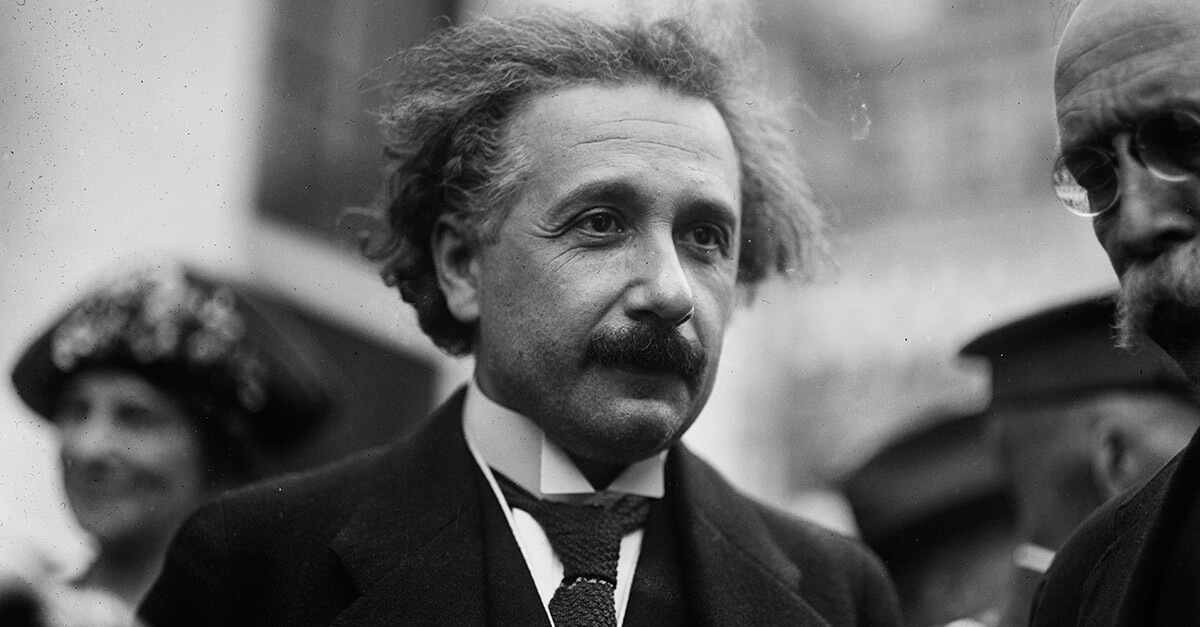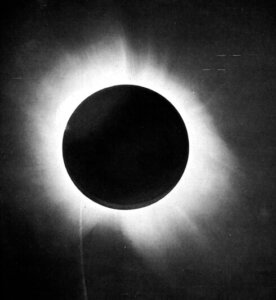How the 1919 solar eclipse made Albert Einstein famous
Photographs from the celestial event proved the theory of relativity, which caught the world by surprise

Albert Einstein in Washington, D.C. Courtesy of Library of Congress
Very few people outside of Germany had ever heard of Albert Einstein in the early part of 1919. Even his mother was once unsure of his greatness. Asked if her son would amount to anything, she once admitted she thought he would be “gornisht,” Yiddish for nothing.
And lest you think that, hey, at least people in Einstein’s native Germany held him in high regard, well, you’d be quite wrong. Einstein — who would go on to become Time magazine’s Person of the Century — graduated college (barely) and couldn’t find a job. His dream was to become a professor, but no school would hire him.
Einstein placed newspaper classified ads offering to tutor kids in math. I imagine somewhere there is a high school student who had the world’s favorite genius teach him algebra.
Even when Einstein finally started to publish some of his work, fellow German scientists thought he was a bit of a nut job. The guy with all of the out-of-the-box ideas rethinking how we view the entire universe is not usually taken that seriously. The wild hair that looked like he put his finger in an electrical socket likely didn’t help. They were also holding a grudge against Einstein for his choice to keep working on his own theories during World War I instead of using his scientific knowledge to help Germany in the war effort.
Years later, that dislike would devolve into blatant antisemitism: One hundred scientists authored a screed against Einstein. Anti-relativity rallies were held in Berlin. By the time Hitler rose to power, Einstein was declared an enemy of the state with a reported $5,000 bounty on his head. There were at least two assassination attempts on him, one inside his own home.
But we’re getting ahead of ourselves: That would all come in due time, once Einstein gained acclaim and fame, once he won the Nobel Prize and became the most famous Jew in all of Germany.
But in 1919, fame was still far away. Einstein himself was doubting his own worth. He had just signed his divorce papers, ending a tempestuous 20-year relationship with Mileva Marić. He was dealing with health issues. And nobody was taking his work seriously.
But then came May 29, 1919. That’s the day when Albert Einstein became immortal.
Look! Up in the sky! It’s a bird, it’s a plane, it’s … proof
For the previous two centuries, Isaac Newton’s logic prevailed. The British physicist believed that the galaxy had a fixed framework — and the fundamentals were static. Einstein rewrote those rules throughout the early 1900s, eventually publishing his general theory of relativity in 1915, but it remained unproven.
Einstein believed that matter and energy could distort the universe in much the same way as a person lying on a mattress can cause it to sag. And when that person rolls over, they would cause the mattress to shake and jiggle. Those ripples are called gravitational waves.
If Einstein’s predictions were proved accurate, it would mean recalculating where every star and planet is in the universe. But there was a practical problem with Einstein’s theory of relativity: it was just that, a theory. He couldn’t properly measure his prediction without seeing those gravitational waves in motion, and telescopes in the early 1900s could not detect such subtlety in space.
But what if there was a moment when such movements were not so subtle? What if Einstein could know in advance when something so big was about to happen that the astronomers of his day could spot it from Earth?
As it happened, Einstein was in luck.
A solar eclipse was set for the spring of 1919, providing the physicist the perfect opportunity to test his theory. During a total solar eclipse, stars passing through the sun’s gravitational field would be visible, and accurate measurements could, in fact, be made.
All Einstein had to do now was figure out a way to photograph an eclipse, something with which he had no expertise. No German scientists wanted to help (see above: Einstein the crackpot), and other European scientists had shunned working with Germans after World War I.
Thankfully, he found Sir Arthur Eddington, a British astronomer, who cared more about science than politics. Eddington organized an expedition to the island of Principe off the western coast of Africa to take pictures. They also sent astronomers to Sobral, Brazil, just in case it was raining in Africa and they needed backup photos. (Indeed, an attempt by Einstein to photograph an eclipse the previous year had been marred by cloudy weather.)

And then it happened. For six minutes and 51 seconds on May 29, 1919, Eddington and his team witnessed one of the longest solar eclipses of the 20th century. They analyzed the data from the photographs and held a press conference to announce their findings at London’s Royal Society, the oldest national scientific institution in the world (and one which counts Isaac Newton as an early member). In that one moment, the theory of relativity overthrew Newton’s law of gravity as the reigning rule in physics.
The New York Times, which was so unprepared for the news that it sent its golf reporter to cover the announcement, declared in an all-caps headline: “EINSTEIN THEORY TRIUMPHS” and went on to call it “perhaps the greatest of achievements in the history of human thought.”
Einstein instantly became famous, recognized wherever he went. He received so much fan mail and press inquiries that he complained he could “barely breathe.” It was the Big Bang moment of Einstein’s life. Two years later, he was awarded the Nobel Prize in Physics. “It’s hard to think of a more important experiment in the 20th century,” said Daniel Kennefick, the author of a book about the historic eclipse of 1919.
The scientists on the expedition overcame war, bad weather and equipment problems to test and prove one of science’s now most fundamental suppositions — Einstein’s theory of relativity. (HBO made a movie about the eclipse, Einstein and Eddington, starring David Tennant from Doctor Who and Andy Serkis from the Lord of the Rings trilogy as the two scientists.)
It’s been a little more than a century since that fateful spring day. Another total solar eclipse — on April 8 — is on the horizon. As for Einstein, his theory is still rippling: In 2016, scientists made the first observation of a gravitational wave. Like Einstein, they won the Nobel Prize.















